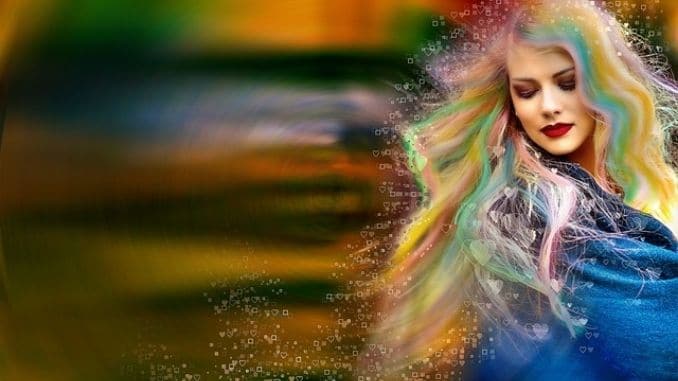
Have you become more careful about the skin care products you choose? Have you heard that some of the chemicals in these products can penetrate your skin and get into your bloodstream?
It’s true. The skin care products you use can introduce certain ingredients into your body, potentially impacting your health. But some of the ingredients in the skin care products you use can get inside you, where they may affect your health.
The Harvard School of Public Health reports that some ingredients “in makeup, skin and hair care products may cause health risks such as allergic reactions, hair loss, asthma, and cancer.” Chemicals such as parabens and phthalates, found in lotions, nail polishes, hair sprays, and other products, disrupt the hormonal system and may induce reproductive and other health problems, as they go on to note”.
Once you understand that your skin can act as a doorway to your internal body systems, you’re more likely to seek out natural and healthy skin care products. However, what about the skin on your head?
It turns out that the scalp is just like the skin anywhere else on your body and may allow some chemicals into your system. There isn’t much worry with shampoos and conditioners as we rinse these off after a very short period of time. There is something, however, that sits on your scalp for quite a while: hair coloring products.
Just how toxic are hair dyes, and what can you do to reduce your risk of health issues?
Potentially Toxic Ingredients in Most Hair Dyes
When looking at the solutions that make up hair dyes, we find many potentially toxic ingredients. That doesn’t mean they will cause cancer in humans, but scientists are looking into a potential connection in an attempt to protect public safety.
We do know that early dye formulations were more dangerous than the ones we have today. In the 1970s, manufacturers changed their products to eliminate some of the carcinogenic ingredients. Despite improvements in today’s products, they still contain ingredients that may pose some health risks. These include the following:
- Formaldehyde: This chemical is a known carcinogen and can be released by the ingredients in hair dyes. It’s hidden away in “DMDM Hydantoin,” a common preservative, which can slowly release formaldehyde over time, particularly the longer the color is stored.
- P-phenylenediamine: Derived from petroleum, P-phenylenediamine (PPD) is one of the most commonly used chemicals in hair dye, particularly dark colors because it gives dyed hair a natural look. It has also been linked with serious health problems, including kidney issues and bladder cancer. Also used in the manufacturing of rubber chemicals and textile dyes, it can cause reactions on the scalp and skin. Over time, some people can become allergic, or “sensitized,” to it and may suffer from redness, inflammation, dermatitis, and rashes along with the hairline or anywhere else the hair color touches.
- Ammonia: This ingredient helps open up the outer layer of hair so the dyes can penetrate and produce color more easily. It not only damages the hair but can also cause inflammation on the scalp in those who are sensitive to it. It is also drying to the skin and can cause scalp itch. The fumes may exacerbate symptoms in those with asthma or allergies.
- Resorcinol: Also called “dehydroxy benzene,” this is another ingredient derived from petrochemicals that work to provide permanent hair coloring. It can cause skin irritation and redness and has been linked to cancer in some animal studies. Like PPD, it can cause increased sensitivity over time, resulting in allergic reactions for some people. Animal studies have linked resorcinol to hormone disruption — specifically, it may disrupt the production of thyroid hormones, negatively affecting thyroid function.
- Hydrogen peroxide: Though this ingredient isn’t toxic to human health, it does strip the natural color away from hair. Hair can become more brittle and duller easily with repeated uses, so avoiding this ingredient when possible can help keep hair looking healthier.
Types of Hair Dyes
The extent of your exposure to the chemicals in hair dyes depends on the type of hair dye you are using. In general, there are five basic types:
- Permanent (oxidative) dyes: These dyes remove the natural color and deposit the new color in its place. They are the most effective when it comes to creating a new color or covering grays. Shampooing does not remove the color, but it will fade as hair grows out. Hydrogen peroxide bleaches out the natural color. Then, the PPD molecules penetrate deep into the hair shaft. Ammonia helps them penetrate and, once inside, hydrogen peroxide “oxidizes” the dyes to deposit the new color.
- Demi-permanent dyes: These are milder than permanent dyes because they don’t contain ammonia. They cannot lighten the color, only match or darken it, but they can create a more natural look as the hair grows out. They have lower concentrations of hydrogen peroxide. The color molecules penetrate the hair shaft, but they don’t bleach the color that’s already there. All these factors make these dyes less damaging to the hair and less irritating to the scalp. These dyes do contain PPD, however.
- Semi-permanent dyes: These contain neither ammonia nor hydrogen peroxide, and the molecules do not penetrate the hair shaft. semi-permanent hair dyes like henna are considered milder and gentler on the hair and scalp since they are deposited on the outermost layer of the hair. They have washed away with shampooing in time but looks more natural as the hair grows out. Like demi-permanent dyes, they can match or darken hair, but not lighten it. These dyes do not contain PPD.
- Gradual dyes: Also called “metallic dyes,” these are made up of a solution of metals that leave behind dark shades. They require repeated applications over a period of weeks, during which they gradually darken the hair. The color fades easily with shampooing. Individuals allergic to PPD-containing dyes often prefer these hair dyes, as they do not contain PPD.
- Temporary dyes: These are used to brighten, tint or enhance dyed hair. They’re often used for fun occasions like parties or sporting events and come in “unnatural” shades like pink and purple. They include compounds that are large-sized molecules, so they do not penetrate the hair shaft. That means they will wash off within one to two shampooings in most cases.
Can Hair Dyes Cause Cancer?
The International Agency for Research on Cancer (IARC) reports that some of the chemicals in hair dyes are “probably carcinogenic to humans.” Those most at risk for dye-related cancer are hairdressers and barbers — professionals who handle these dyes most every day.
. They also stated that while early studies suggested a potential increased risk of bladder cancer for those professionally using permanent hair dyes, more recent studies have not found any such risk.
“Today, there seems to be no relevant bladder cancer risk from the use of oxidative hair dyes,” the researchers wrote.
In 2010, however, researchers reported conflicting findings. In a 2010 review of 42 studies, they found a significantly increased risk for bladder cancer among hairdressers, in particular for those hairdressers who worked in the profession for more than 10 years. The scientists noted, however, that it takes a long time for bladder cancer to develop 20 years or more. The risk for hairdressers working after 1980, when hair dyes were improved, having the same risk remained an “open question,” as noted by the scientists.
However, what about individuals who aren’t professional stylists but occasionally color their hair—are they also at risk?
The National Cancer Institute (NCI) states that some studies have linked personal use of hair dyes with an increased risk of certain types of cancer, like non-Hodgkin’s lymphoma, leukemia, breast cancer, and bladder cancer, but other studies have shown no such risk. The IARC has concluded that personal use of dyes is “not classifiable as to its carcinogenicity in humans.”
The NCI notes, however, that there is the possibility that the lower risk in women using dyes after 1980 may be due to lower cumulative exposure levels or “insufficient time” since first exposure for the cancers to have developed.
When looking into leukemia specifically, and bladder cancer, researchers again found conflicting results. These studies came up with two important findings, however:
- The risk was greatest among those who had used permanent dyes for longer periods (15 years or more)
- The risk was greatest among users of black permanent dyes
How to Reduce Your Health Risks From Potentially Toxic Hair Dyes
To help reduce your risk of potential long-term health issues and to lower your risk of skin and scalp reactions, try these tips:
- Choose hair dyes that don’t contain PPD: As this ingredient is usually responsible for skin reactions, it may be better for you to avoid it, particularly if you have started to notice some sensitivity to it. If you dye your hair frequently and you use dark colors, this may also be a good idea. Some manufacturers are now using para-toluenediamine sulfate (PTDS) as a substitute for PPD as it seems to have a lower level of risk, although some people are still allergic to this ingredient too. Ask your stylist for recommendations or go to a stylist that specializes in less toxic dyes. It’s important to note that even dark henna products, often marketed as more “natural,” may still contain PPD.
- Use semi-permanent dyes: Because these do not contain PPD, they are considered a gentler version of hair dye. If you want only to match or darken your natural hair color, or you want to cover a few grays, this can be a less toxic choice for you.
- If you’re blonde, stay blonde: Darker hair dyes have more PPD than lighter ones, in general, so if your hair is naturally lighter, stick with it if you want to lessen your chemical exposure.
- Stick with highlights: If you get highlights only, the coloring chemicals are less likely to touch your scalp, creating a lower health risk.
- Ask about natural options: So far, it is near impossible to find completely “natural” hair dyes that work as well as the others. You can ask your stylist, however, and experiment as you like, but keep in mind that most hair dyes still contain some potentially toxic chemicals. Lighter shades of henna are the safest — remember that dark shades have PPD. Most other dyes need chemical actives to color hair.
- Read labels: If you’re coloring your hair at home with over-the-counter products, read the labels carefully. Even if the product says it’s “natural” or “infused with botanical ingredients,” it’s like to contain some toxic ingredients. If you see things like ammonia or hydrogen peroxide and you don’t want to use these, choose a different product. In fact, even health store hair dyes usually contain some of the chemicals linked with allergies and health issues.
- Cut back on your coloring appointments: When looking at overall health risks that may be associated with hair dye, the key factor is the extent of exposure. The more often you color your hair, particularly if you’re regularly using permanent dyes, the more you are exposed to the potentially toxic ingredients. Try to go for longer periods between appointments. Use a color-safe shampoo, shampoo less often if you can, and protect your hair with deep moisturizers. You can also experiment with spray-on cover-ups when needed.
- Start later in life: Many teens and young adults are coloring their hair for fun without realizing the potential risks. Young people are better off using temporary, gradual and semi-permanent dyes, which can reduce lifetime exposure.
- Protect yourself: If you apply hair color at home, be sure to wear gloves and consider performing a patch test on your arm to be sure you don’t have an allergic reaction to the solution. Leave the dye on your head only as long as necessary and then rinse thoroughly. Never use dye on your eyebrows or eyelashes as you could hurt your eyes and damage your vision. The United States Food and Drug Administration (FDA) does not allow the use of hair dyes on eyelashes or eyebrows.
There are many ways to keep your body healthy. One of the most important ways is through what we eat. For your guide to the best foods to heal your body, check out The Best Foods that Rapidly Slim & Heal in 7 Days, here!







